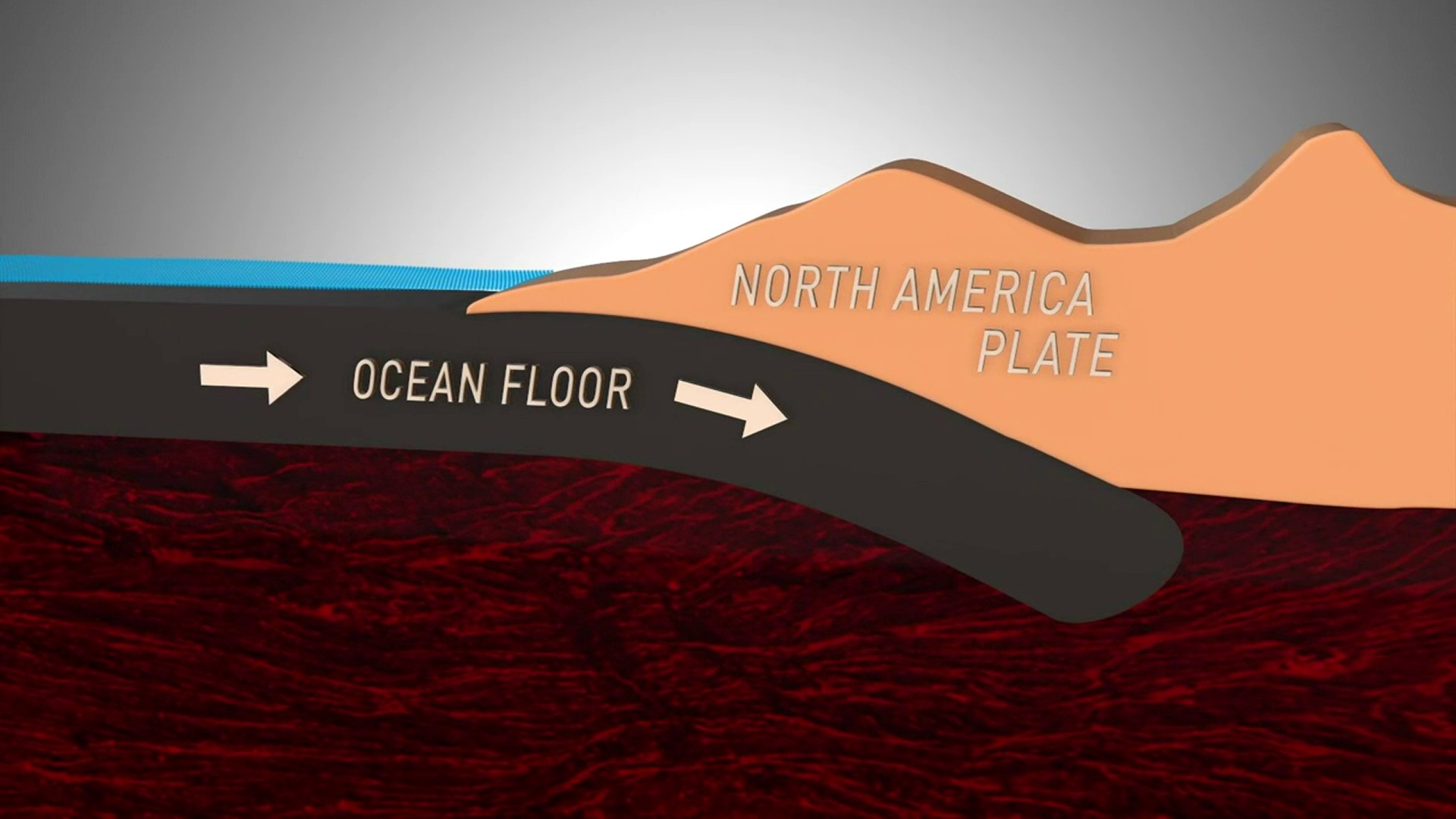SEATTLE — Friday marks the anniversary of the last major earthquake in the Pacific Northwest when the Cascadia Subduction Zone went off 324 years ago.
Since then, Washington has seen smaller earthquakes, such as the magnitude 6.8 Nisqually quake in 2001, but nothing like the one caused by the Cascadia Subduction Zone.
On January 26, 1700, at 9 p.m., the fault that locks the ocean floor to the North American Plate slipped and caused an earthquake so big it created a tsunami on the west side of the Pacific Ocean.
The tsunami was recorded in Japan, and scientists nailed down the time of the earthquake based on those recordings. They took the recorded time of the tsunami and backtracked it by the 500 miles per hour of tsunami energy it takes to cross an ocean to calculate when it began.
The Japanese called it the “orphan tsunami,” because to them there didn’t seem to be any earthquake activity associated with it.
In Washington state, scientists were able to track information about the 1700 earthquake by examining "ghost forests" along the coast. These forests are dead trees that were invaded by saltwater. By measuring correlating rings from surviving trees, it appears the trees killed by the quake were alive in 1699 but not in 1700.
When the earthquake struck, the land the trees were growing on dropped as pressure building between the North American tectonic plate and the Juan de Fuca plate, which was being forced under it, unlocked. The earthquake lowered the outer coast and allowed it to move west.
Scientists said the trees were killed when the land they were growing on suddenly dropped between 6 and 8 feet, turning the land into a salt marsh, which is uninhabitable for coniferous trees.
The Cascadia Subduction Zone starts off Cape Mendocino, Calif., and runs off the coast of northern California, Oregon, and Washington to the north end of Vancouver Island, Canada.
When it goes off again, seismologists expect a magnitude 9 earthquake to last five minutes or longer.
The quakes come every 250 years on average, but the intervals are highly variable, according to geologists.

